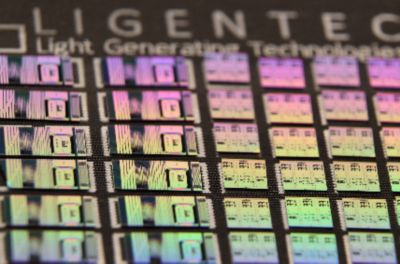주요 사양 요약
Ansys Lumerical FDTD는 Ansys Lumerical CML Compiler, Ansys 다중물리 솔버, Ansys Speos, Ansys Zemax 및 타사 EPDA(전자 광자 설계 자동화) 공급업체와 원활하게 작동하여 빠르고 정확하며 확장 가능한 포토닉 설계를 지원합니다.
차세대 엔지니어에게 힘을 실어주는 Ansys
학생들은 세계적 수준의 시뮬레이션 소프트웨어를 무료로 이용할 수 있습니다.
미래를 설계하기
시뮬레이션이 다음 혁신을 어떻게 지원할 수 있는지 알아보려면 Ansys와 연결하십시오.
Ansys Lumerical FDTD는 포토닉 컴포넌트, 프로세스 및 재료 모델링에 대한 골드 스탠다드입니다. 통합 설계 환경은 스크립팅 기능, 고급 후처리 및 최적화 방법을 제공합니다.
Ansys Lumerical FDTD는 단일 설계 환경에서 FDTD, RCWA 및 STACK 솔버를 통합한 포토닉 시뮬레이션 소프트웨어입니다. 이를 통해 회절 격자, 다층 코팅, uLED, CMOS 이미지 센서, 금속 렌즈 및 메타표면을 포함한 다양한 장치에 대한 정밀한 분석 및 최적화가 가능해져 다양한 응용 분야에서 동급 최고의 성능을 제공합니다. Ansys Lumerical FDTD는 가장 복잡한 설계에 대해 신속한 가상 프로토타입 제작과 수천 번의 반복 검증을 지원합니다.
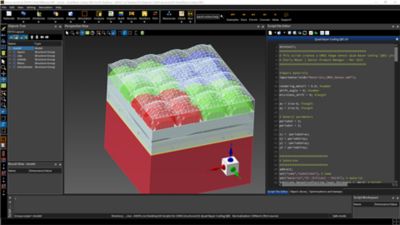
Ansys Lumerical FDTD는 Ansys Lumerical CML Compiler, Ansys 다중물리 솔버, Ansys Speos, Ansys Zemax 및 타사 EPDA(전자 광자 설계 자동화) 공급업체와 원활하게 작동하여 빠르고 정확하며 확장 가능한 포토닉 설계를 지원합니다.

“Ansys Lumerical 시뮬레이션 소프트웨어는 정확성, 호환성, 사용자 친화성 및 지원에 대한 우리의 기준을 충족했으며 우리가 자신 있게 포토닉 장치를 설계하고 최적화할 수 있게 해주었습니다. 이 소프트웨어를 사용하면 제조 프로세스 데이터를 쉽게 통합하여 실용적이고 사실적인 시뮬레이션 결과를 얻을 수 있습니다."

“최적화, 스크립팅 및 클라우드 지원을 갖춘 Ansys Lumerical의 도움으로 우리는 전례 없는 저손실 성능, 소형화 및 높은 제조 허용 오차를 위해 X8 회로의 모든 구성 요소를 최적화할 수 있었습니다.”

“Ansys Lumerical FDTD 솔루션을 Cloud 가속기와 함께 사용하면 삽입 손실을 15% 이상 줄이는 동시에 설계 일정을 크게 단축할 수 있었습니다.”

“Lumerical FDTD 솔루션은 우리의 연구 및 개발 구조의 필수 구성 요소입니다. 사용자 친화적인 레이아웃을 통해 단기 프로젝트를 빠르게 설정할 수 있으며 스크립팅 기능, 문서 및 예제를 통해 기술을 일관되고 효과적으로 발전시킬 수 있습니다.”

“우리는 Lumerical FDTD 솔루션을 사용하여 일련의 맞춤형 스크립트로 제작할 수 있는 매우 정확한 미소공진 OLED 모델을 만들었습니다. Lumerical은 시간과 비용을 모두 줄이는 데 중요한 역할을 했으며, OLED의 광학 구조를 조정하기 위한 특허받은 현재 방법을 실행하는 주요 툴로 계속해서 사용되고 있습니다.”

“우리는 Ansys Lumerical FDTD + AWS + Python API를 사용하여 이 메타표면의 모든 나노미터를 설계하면서 CMOS 제조 허용 오차와 호환되도록 했습니다. Lumerical의 AWS 솔루션을 통해 Lumotive는 추가 비용이나 정확성 저하 없이 설계 주기를 2~3배까지 확장할 수 있었습니다.”

“잘 개발되고 정밀한 FDTD 방법을 사용하여 광범위한 물리적 시뮬레이션을 수행할 수 있는 기능은 최종 생산 단계에서 더 높은 수준의 보장을 제공합니다. Lumerical의 FDTD 기반 HPC 접근 방식은 가장 빠르고 비용 효율적인 것으로 입증되었습니다.”

“Lumerical의 소프트웨어는 우리 연구에 매우 중요한 역할을 했습니다. 시장을 선도하는 명성을 유지하기 위해 매우 유용한 기능이 지속적으로 추가되고 있습니다.”
2025년 7월
최신 버전의 Ansys Lumerical FDTD는 차세대 포토닉 시스템 설계자에게 더 큰 유연성과 확장성을 제공하는 새로운 GPU 가속, 역설계 및 CAD 연계 운용성 기능을 제공합니다.
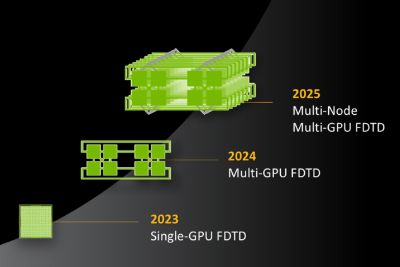
다중 노드, 다중 GPU 실행이 지원되어 대규모 전자기 시뮬레이션을 여러 GPU 및 컴퓨팅 노드에 분산할 수 있으므로 복잡한 3D 포토닉 구조의 런타임이 크게 단축됩니다.

이제 Ansys Cloud Burst Compute가 Ansys Lumerical FDTD에 통합되어 사용자가 설치나 설정이 필요 없는 SaaS(Software-as-a-Service) 기능을 사용하여 Lumerical FDTD 데스크톱에서 Ansys가 관리하는 클라우드 컴퓨팅 리소스에 온디맨드로 Lumerical FDTD 작업을 제출할 수 있습니다.
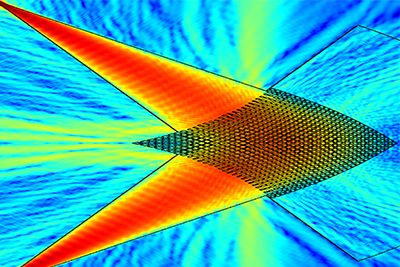
Ansys Lumerical FDTD의 최신 개선에는 GPU 가속 시뮬레이션이 도입되어 메모리를 크게 절약하고 메싱 시간을 단축할 수 있습니다. 이러한 발전을 통해 Photonics 엔지니어와 연구원들은 향상된 효율로 더 큰 시스템을 시뮬레이션할 수 있으므로 성능 저하 없이 더 복잡한 설계와 시스템을 쉽게 처리할 수 있습니다.
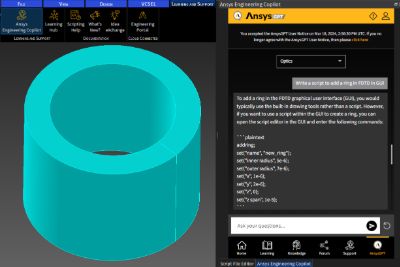
이제 Ansys Engineering Copilot이 Ansys Lumerical FDTD에 통합되어 제품 내에서 AI 어시스턴트에 액세스할 수 있습니다.

이제 레이어 반복을 통해 여러 독립적인 반복 레이어 그룹을 사용할 수 있습니다. 응용 분야로는 VHG(볼륨 홀로그램 격자) 및 광학 계측학이 있습니다.
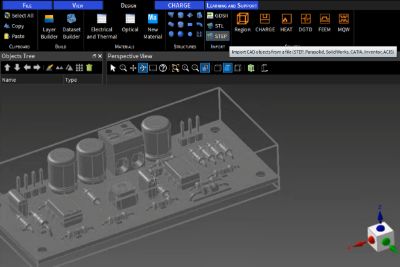
이제 Ansys Lumerical FDTD가 Parasolid, SolidWorks, CATIA, Autodesk Inventor 및 ACIS 파일에서 CAD 개체를 가져올 수 있습니다.

기능
Lumerical FDTD는 광범위한 포토닉 구성 요소의 설계 및 최적화를 위한 업계 최고의 시뮬레이션 소프트웨어입니다. Lumerical FDTD는 범용성과 확장성이 뛰어나며 비교할 수 없는 속도와 HPC(CPU 및 다중 GPU) 및 클라우드 리소스를 활용하는 기능을 제공합니다.

엔지니어 업무 시간의 34%는 시뮬레이션 데이터를 검색하는 데 소비합니다. 이 영상은 Ansys Minerva를 사용하여 이러한 문제를 해결하고 엔지니어의 생산성을 높이는 방법에 대해 설명합니다.
시뮬레이션 프로젝트와 관련된 복잡성을 줄이고, 팀원들이 조화롭게 작업하여 시간을 절약하고 프로젝트 전반에 걸쳐 모범 사례를 일관되게 확보할 수 있습니다.
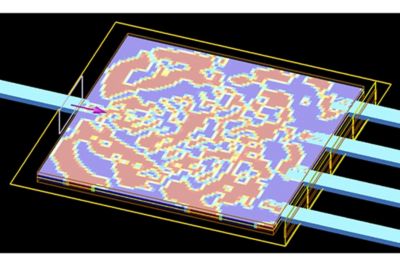
Ansys는 모든 사용자가 당사 제품에 액세스할 수 있다는 것을 가장 중요하게 생각합니다. 따라서 US Access Board(508조), Web Content Accessibility Guidelines(WCAG) 및 Voluntary Product Accessibility Template(VPAT)의 현재 형식에 근거한 접근성 요구 사항을 준수하기 위해 노력하고 있습니다.
엔지니어링 과제에 직면하고 있다면우리 팀이 도와드리겠습니다. 풍부한 경험과 혁신에 대한 헌신을 가지고 있는 우리에게 연락해 주십시오. 협력을 통해 엔지니어링 문제를 성장과 성공의 기회로 바꾸십시오. 지금 문의하기
